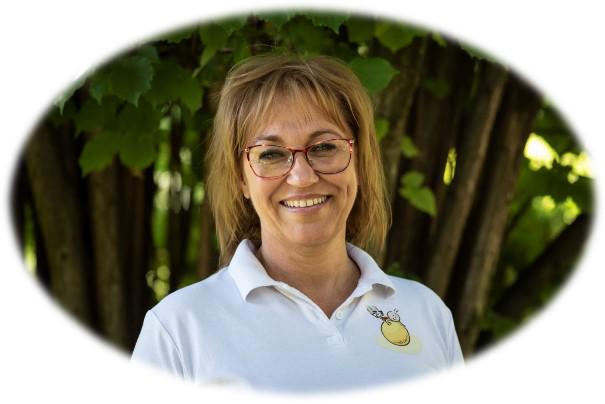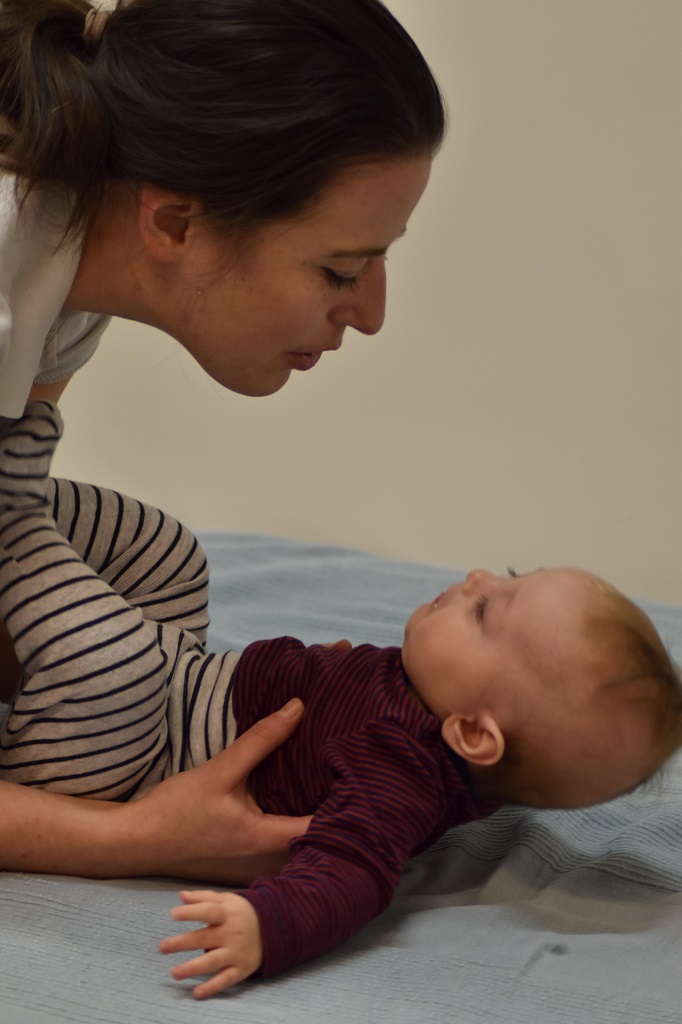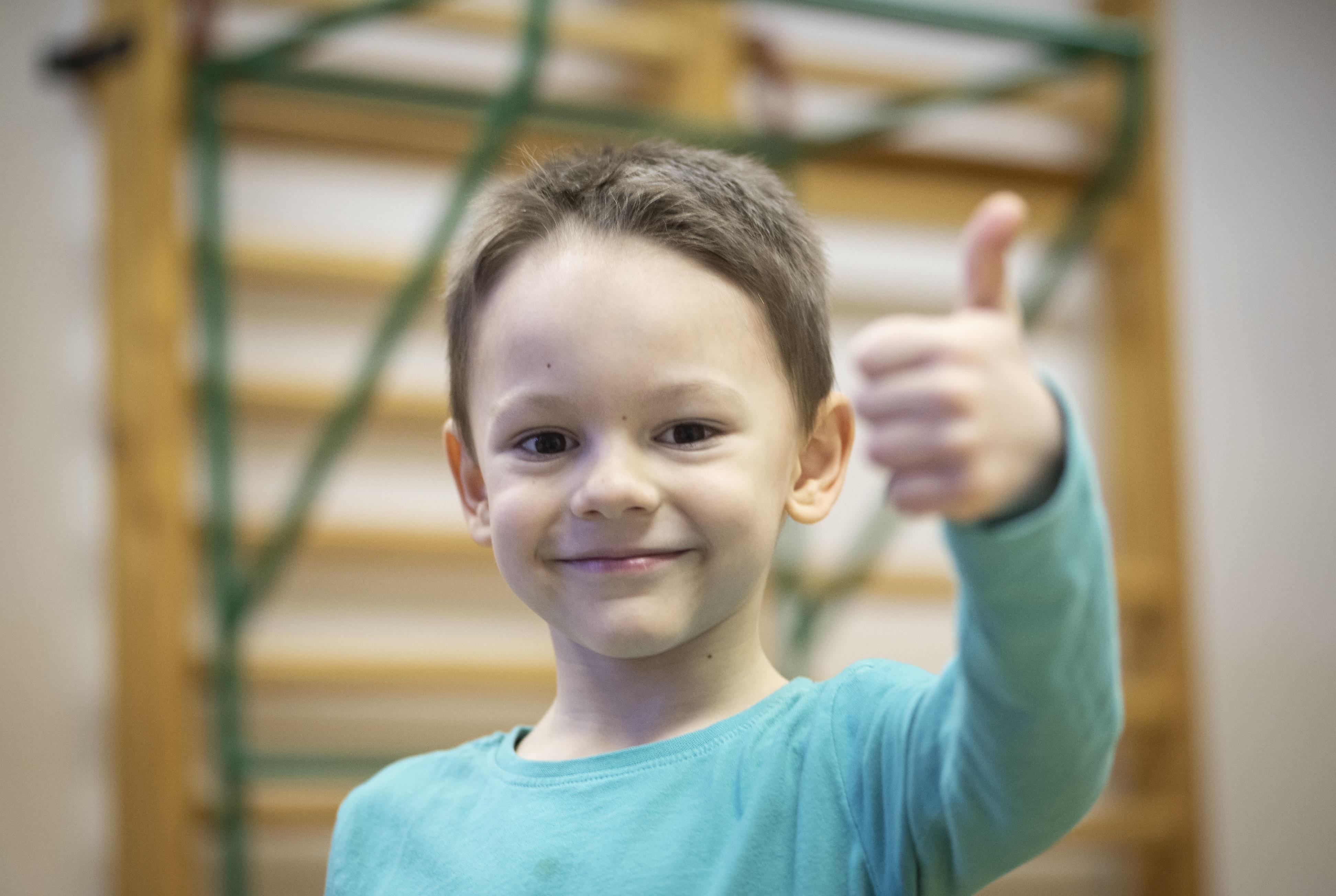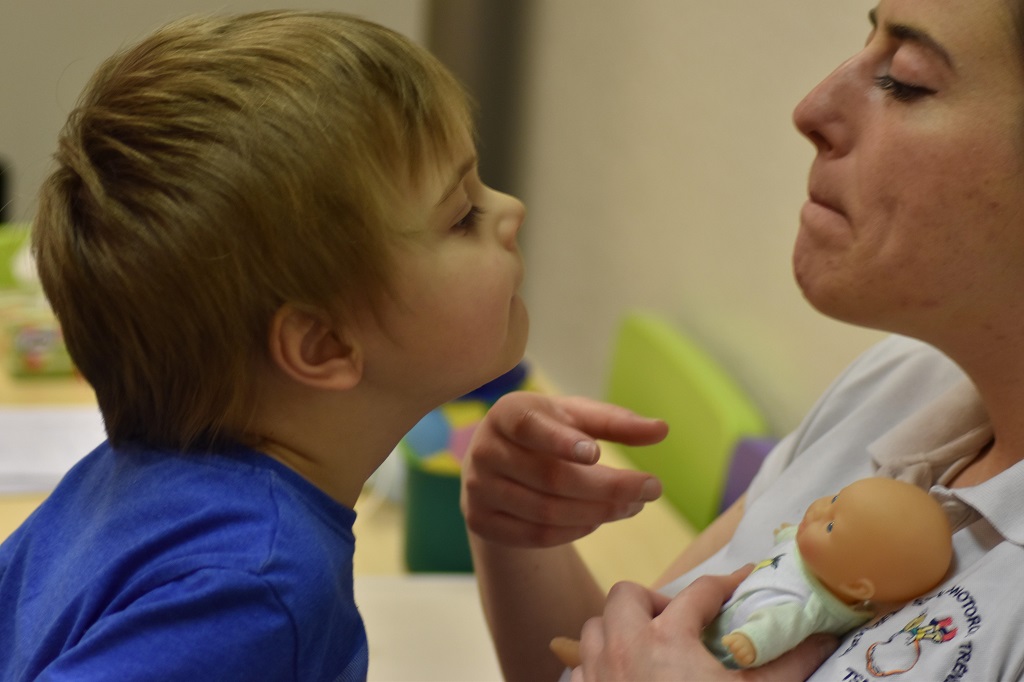
Author: Mariann Fegyó, Special education teacher for children with intellectual disability (feeble-mindedness/oligofrenie), somatic movement educator, TSMT therapist and mentor, Instructor at TSMT-HRG College
To view the mechanism of action of TSMT and HRG therapies on delayed speech and language development, click here!
A few words about speech and language development
Speech is one of the most important tools of communication between people. Although children communicate with their environment in some nonverbal forms even before they learn to speak, it is speech acquisition that speeds up the child’s communication skills. Speech acquisition is a long and complex developmental process that requires complex neural activity, but the pace of development depends on the environmental impacts as well. Environmental factors can vary from child to child, therefore the pace and course of language development can manifest individual differences. However, in most of the cases children's language development unfolds in a predictable sequence of developmental milestones, where, similarly to motor development, the certain stages are built on each other forming a coherent system. This system is indivisible, therefore the stages of development are not interchangeable and neither milestone can be skipped.

Language development is based on the following conditions: the speaking environment, the proper functioning of memory, of the visual, auditory and motion centre, the child’s ability to understand speech, the integrity of speech organs and his or her desire to imitate the speech of others. The number of children with language delay has multiplied in recent years.
It can occur due to hereditary, innate and acquired factors. In order to assess the extent of the language delay, we need to know the course of normal speech development.
In the first weeks after birth, vocalisation is controlled by biological sounds in the first place. This reflexive vocalization is directly related to the infant’s physical and mental state. These vocalizations can be classified in two subgroups: sounds of physiologic origin (coughing, sneezing or hiccups) and expressive crying. With the latter the infant expresses for his environment the important events and conditions (pain, hunger, boredom, etc.). In case of normal development, the infant from the very beginning pays close attention to the eye contact and emotional reactions of the caregivers.
Parental reactions encourage the infant’s experimentation: they watch the mouth movements, mimic and repeat the adults' vocalizations.
At first, they master the intonation and the sounds that are easy to pronounce, and later they learn to mimic the more difficult ones. Comprehension develops at a faster pace than speech production itself. From seven to ten months of age is the period of babbling, which is the precursor to the first words. During this period, the variety of sounds produced by child multiplies, he begins to repeat and double the sounds, often producing reduplicated babble, becoming able to utter longer chains of sounds.
Then he starts to become more and more conscious in using speech melody, tone and rhythm. This is the time when so called protowords first appear: certain syllables he starts using with the same melody, assigning them a specific meaning. He becomes more adept at recognizing and processing the speech heard (understands parental prohibitions and short instructions). The infant starts imitating some of the words heard from his environment without understanding their meaning (echolalia). This cannot yet be considered as part of the vocabulary, since the words are not used consciously.

At 10 to 12 months is the period when the baby utters the first simple words. First, he says easy-to-pronounce words that are produced to describe persons or objects around him or express an action or direction. These are isolated words with no conjugation. The child often utters the beginning of the word only, and later he tries to reproduce the correct number of syllables. Towards the end of the first year of life, the child starts using situative speech, in other words, gibberish. These are sequences of syllables the intonation and emphasis of which is similar to sentences of the child’s native language, but usually without any meaning. They can be understood in the context of a specific situation. At the age of 18 to 24 months, the child’s use of language becomes a little more skilled and complex. Active and passive vocabulary grow by leaps and bounds, and the child soon begins to combine the words that are actively used. The first telegraph-style sentences appear, which are still grammatically incorrect. At 2-3 years of age, the child’s vocabulary continues to grow, he learns the use of pronouns and conjugation.
At preschool age (from 3 to 6 years) there is a continuous quantitative and qualitative development at all levels of the language. The period of telegraph-style speech is over now, the complete system of suffixes is built. The structure of sentences becomes more and more complicated, the child’s speech becomes grammatically correct, and it can be understood by others. Speech processing largely relies on visual information, and the child becomes capable of conducting dialogues. From the age of 7, a gradual enrichment and complexity of his language can be observed. There is no significant change in language, but progress can still be traced. The speech sounds get stabilized, incorrect forms compared to adult language occur very rarely now. The level of development achieved by this time establishes and influences the acquisition of written language to a great extent.
Which is the degree of the developmental delay when you should consult a specialist?
The pace of speech development varies from one person to another. It is an accepted fact that boys more often have speech delay of varying degrees. In their case a half-year lag may still be acceptable, especially if their other communication skills are normal. A slight lag is also acceptable in bilingual children.
What are the reasons for delayed language development?
Late speech development is a case when the child at 2 years of age still does not have a 50-word active vocabulary. Delayed speech can be a warning symptom of the risk of language development disorder.
How can TSMT and HRG help?

Research shows that speech and motor development are closely related. Speech is a very complex neural activity, for the development of which timely motor development is essential as well. Therefore, in the examination prior to the developmental screening, it is important to know the conditions during pregnancy and childbirth, early adaptation, and the steps of motor development to see whether the child’s development differed from the normal one at other points as well. To map the child’s level of development, we use the age-appropriate tasks of the LongiKid© test.
If, based on this result, we believe that the underlying cause for the problem is organic immaturity, we start the child’s development process with the TSMT method, which matures and structures the nervous system in the course of motor development. As a result of vestibular stimulation, the child’s muscle tone and motor coordination improve. The sets of tasks help develop the child’s perceptual processes, improve their concentration and promote better control of attention. The movements are accompanied by nursery rhymes and songs, which can be used to activate the desire to speak in the child. By repeating the rhymes, their vocabulary grows, they learn to master the melody and rhythm of the Hungarian language. And simultaneously, the child’s sense of rhythm, attention and memory develop as well. The harmonisation of motion – rhythm – and speech creates the basis necessary for the future learning processes.
References: